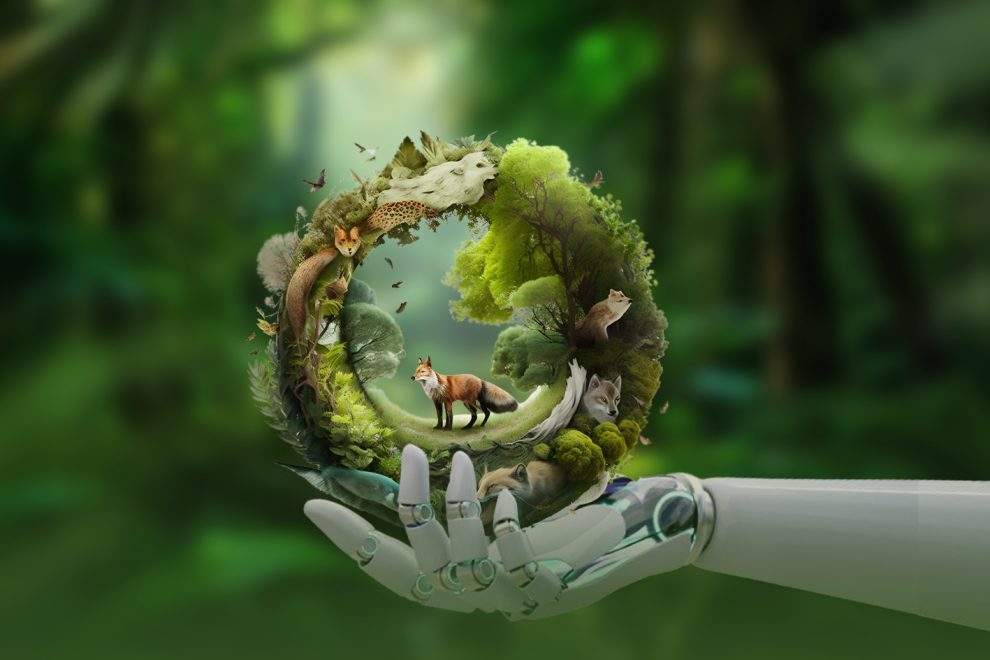The natural world teems with vibrant life, a tapestry woven from countless species, each playing a vital role in the intricate dance of ecosystems. Yet, a rising tide of threats – habitat loss, climate change, and the relentless scourge of poaching – pushes many of these precious creatures towards the precipice of extinction. In this critical hour, hope emerges from an unexpected quarter: the realm of artificial intelligence (AI).
AI as a Powerful Ally for Conservation
Once confined to science fiction, AI is rapidly evolving into a versatile tool, and its potential for wildlife conservation is truly game-changing. Imagine vast landscapes monitored by intelligent eyes, unseen and untiring, meticulously tracking the movements of endangered species and proactively safeguarding them from harm. This is the future AI promises, a future where technology becomes the guardian of the wild.
Tracking Elusive and Endangered Species

One of the greatest challenges in conservation is monitoring elusive species. Animals like Amur leopards, with their solitary nature and vast territories, often vanish into the emerald labyrinth of the rainforest, leaving only fleeting glimpses for researchers. However, AI-powered camera traps equipped with image recognition algorithms can change this. These vigilant sentinels tirelessly scan the undergrowth, identifying individual animals based on unique markings or gait patterns. This data provides invaluable insights into population size, habitat preferences, and even breeding behavior, empowering conservationists to make informed decisions for species protection.
Early Warning Systems to Combat Poaching
The forest hums with a symphony of sounds – rustling leaves, birdsong, and the hushed calls of hidden creatures. But amidst this natural chorus, AI can now discern the ominous crackle of a snare or the distant rumble of an approaching vehicle. Acoustic monitoring systems powered by AI algorithms can analyze vast soundscapes, pinpointing the location of illegal activities like poaching or logging. This real-time intelligence allows rangers to intervene swiftly, potentially preventing the unthinkable before it occurs.
Predictive Analytics to Target Anti-Poaching Efforts
Poaching often operates in the shadows, a clandestine dance between greed and desperation. Predicting where and when these illegal activities might occur is crucial for effective anti-poaching efforts. AI algorithms, trained on historical data of poaching incidents, environmental factors, and ranger patrol patterns, can now generate predictive models. These models identify areas with a higher risk of poaching, allowing rangers to prioritize patrols and allocate resources more efficiently.
Aerial Drones and Thermal Imaging
The traditional ranger on foot, while valiant, is often limited by the vastness of the terrain. Enter the drone, a nimble aerial scout equipped with AI-powered vision. These unmanned marvels can patrol vast areas, their thermal imaging cameras piercing through darkness and foliage to detect poachers and animal activity alike. Real-time data feeds from drones can guide rangers directly to the scene, ensuring swift and decisive action.
Challenges in Conservation Technology
While the potential of AI in wildlife conservation is undeniable, challenges remain. Ethical considerations regarding data privacy and potential misuse of technology must be addressed. Additionally, ensuring equitable access to AI tools for developing countries and marginalized communities is crucial. Finally, the success of AI-driven conservation hinges on robust data collection, algorithm development, and ongoing collaboration between technologists and conservationists.
The Hope for AI in Conservation
Despite the challenges, the future of AI-powered wildlife conservation is brimming with hope. Imagine a world where endangered species roam free, their movements tracked and protected by a silent guardian, a world where poachers find their paths thwarted by the watchful eye of technology. This is not just a dream; it is a future we can build, brick by digital brick, through continued research, development, and ethical implementation of AI. Let us harness the power of technology not to exploit nature, but to become its fiercest protector, its silent guardian in the face of peril.
The race against extinction is on, and AI offers a powerful weapon in this crucial battle. By embracing this technology responsibly and collaboratively, we can ensure that the symphony of the wild continues to play, a testament to our commitment to safeguarding the irreplaceable beauty and wonder of our planet.
















Add Comment